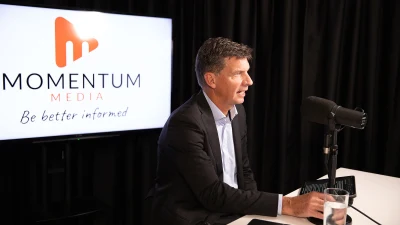In search of portfolio diversification



Dominic McCormick explains why achieving true portfolio diversification in the current economic climate is a complex task.
Gaining true diversification for investment portfolios in the current environment is more challenging than ever.
Ironically, this is despite there now being more asset classes, sub-asset classes and strategies available in investable form than ever before via hundreds of managed funds, listed investment companies and, increasingly, exchange-traded funds.
The problem is correlations across asset classes are currently very high-moving in unison more than ever and particularly at the ‘crisis’ extremes when diversification is most needed.
The ‘risk on/risk off’ mentality of markets means that almost all asset categories – developed and emerging market equities, commodities, precious metals, currencies and many hedge fund strategies – seem to be rising or falling together, at least in the short term.
Even within equity markets, the correlations between individual stocks and the indices in which they are grouped are back towards the historical highs of 2008.
Only bonds seem to move in the opposite direction to this but even their value and diversification benefits are being questioned as markets become focused upon fiscal issues and longer-term inflation.
As James Bianco of Bianco Research recently commented at a Grants Interest Rate Observer conference, “Now we all know that, in a crisis, correlations go to one, but we didn’t know that in a recovery from a crisis they all go to one as well.”
Why is this the case? Bianco suggests it is the intervention of governments and central banks and the maintenance of extremely low nominal and real interest rates – especially in the US – that has provided the speculative pool of capital that rapidly moves in and out of all asset classes.
The line of least resistance in this environment is up. However, when a ‘risk event’ occurs, such as a sovereign debt problem or the recent Japanese earthquake, the selling urgency increases and all markets go into free fall, at least for a period.
Unfortunately, this suggests that all markets could be in for some considerable pain when monetary policy in the US is eventually normalised at some point in the future.
The basic premise of diversification is simple. The ideal investment to add to a portfolio is one that achieves a good rate of return, above the client’s long-term objectives, but achieves this in a pattern different from most other investments in the portfolio, (ie, it ‘zigs’ when the others ‘zag’).
Unfortunately, finding such investments is rather rare in the current environment.
Of course, there is more to diversification than just adding together assets that had low correlations looking backwards from today.
Diversification needs to be built around a more forward looking process – looking for assets and hedges that can help in a range of different economic scenarios, as I discussed in a previous article.
However, even this approach may be of little use in protecting a portfolio from severe shorter-term fluctuations in a particularly highly correlated environment, such as the current situation. So, how should investors respond?
One approach is simply to accept that in the short term these higher-than-normal correlations may continue; however, if history is any guide, they are unlikely to last. If we have built portfolios that are robust across a range of scenarios in the medium- to longer-term, then higher-than-normal short-term volatility is just something we have to live with in the current environment.
It would actually be a mistake to react to these higher-than-normal correlations (and thus overall portfolio volatility) by taking too much risk out of a portfolio, since that risk reduction is likely to reduce the likelihood of meeting clients’ return objectives.
During extreme volatility and crises there is a tendency for investors to be panicked into changes which adversely impact investment portfolios more than the crisis itself.
David Swensen, in the 2010 Yale Endowment Annual Report, stated that, “During financial crisis, investors frequently shorten their perspective to an unreasonably short time horizon and often engage in counterproductive activities.”
Of course, some take these arguments to the extreme and suggest that investors should largely abandon attempts to seek wide diversification and simply accept that the main growth asset – equity markets – have significant risk.
To the extent that investors are not prepared to wear that risk, they argue one should simply reduce the amount in equities and put that money in cash and short-term bonds.
This is certainly simple but in my view it harbours two main problems:
- Equity markets can witness major bear markets and extended periods (at times longer than a decade) where investors do not earn a positive return, or underperform cash. Thus, equity market risks are not always rewarded with higher returns, even over the long term; and
- Sometimes (such as in parts of the modern developed world) the return on cash and bonds is extremely low and/or below the rate of inflation.
Fortunately, the second point is not relevant to the current conditions in Australia, with some attractive interest rates available relative to current inflation. However, low returns on cash and bonds have occurred in the past and almost certainly will again.
My primary concern is that the general uptrend associated with this higher-than-normal correlation of markets since the GFC is creating an environment where all major asset classes are becoming, or are at risk of becoming, overvalued and vulnerable, not just to savage corrections, but to major declines and bear markets dragging out over many years.
Therefore, it is not moving together in the short term, particularly at extremes, which is the main concern, but rather that the rising tide currently lifting all boats will give way to a massive and extended storm that ultimately sinks all.
Against this backdrop, some possible ways to gain true diversification away from this increasing risk are:
- To invest more in cash or equivalents and wait for a better time to add exposure to risky assets;
- To buy protection on these assets using derivatives or structured guarantees;
- To invest more in skilful, more active funds that can be short or in cash (including, but not limited to, selected hedge funds); and
- To explore further, and invest into, appropriate alternative assets and strategies.
These responses are neither easy nor risk-free. Investing more in cash or equivalents can result in failing to meet portfolio objectives over the longer term if the investor is stuck in cash for long periods of time.
There is also the problem of identifying when good value has returned to markets, since derivative or guarantee protection can often be costly, particularly at times of high market volatility. Investing in more skilful, active managers involves identifying truly skilled managers and this is, clearly, very difficult.
The last response increasingly involves working harder in finding new alternative assets and strategies that have yet to be widely used by institutional and retail investors.
The driver of higher correlation across asset classes and strategies is not just government intervention and low interest rates but also assets or strategies that are discovered and included in institutional and retail portfolios, reducing diversification benefits markedly.
For example, commodity investments using fully collateralised futures contracts were a great diversifier and provided good returns relative to spot prices before they were discovered by institutional and retail investors in recent years.
The structure of futures prices where those further-out months trade at lower levels than the near- or spot-month (known as ‘backwardation’) used to provide an attractive ‘roll yield’ across many commodities.
More recently, this structure has tended to disappear as financial investors have swamped the ownership of near-term futures contracts. Interestingly, those commodities that do not have futures markets have continued to have low correlations.
Finding new alternative assets and strategies, and becoming confident enough to use them, can clearly be a major challenge.
This is also because some of these alternative investments are illiquid, and while illiquid assets can offer good diversification (albeit partly because of the lower frequency of, and non-market driven, pricing of the assets), the GFC showed the downside, particularly for retail investors, of being too exposed to illiquid assets.
In our view, a small exposure (probably no more than 10 to 15 per cent of a portfolio) to less liquid assets still makes sense, assuming of course that the expected illiquidity premium is appropriate.
There is a fine line between identifying new assets that can add true diversification, and becoming enmeshed in fads.
As Warren Buffett has noted, there is an inevitable trend in many pursuits, including money management: “First come the innovators, then the imitators and, finally, the idiots”.
These days, staying out of the idiot camp is not enough – when there are too many imitators chasing an investment idea it will tend not to live up to either theory or history, once again highlighting that successful investment is a dynamic, evolving process, not a static one.
Dominic McCormick is chief investment officer at Select Asset Management.
Recommended for you
In this episode of Relative Return, host Laura Dew speaks with Steve Johnson, founder and CIO at Forager Funds Management, about the impact of human psychology on investing and whether fund managers can ever beat algorithms.
In this episode of Relative Return, host Laura Dew speaks with Daniel Bower, chief product officer at FinClear, and Bill Keogh, chief executive of Transact1 (a FinClear subsidiary) to discuss cash as an asset class.
In this episode of Relative Return, host Maja Garaca Djurdjevic is joined by shadow treasurer Angus Taylor to discuss the current state of the financial advice sector, the economy, the housing affordability crisis and more.
In this episode of Relative Return, host Laura Dew speaks with Andrew Mitchell, director and senior portfolio manager at Ophir Asset Management, about why he loves working in fund management and the lessons he’s learnt in a decade of running a firm.












